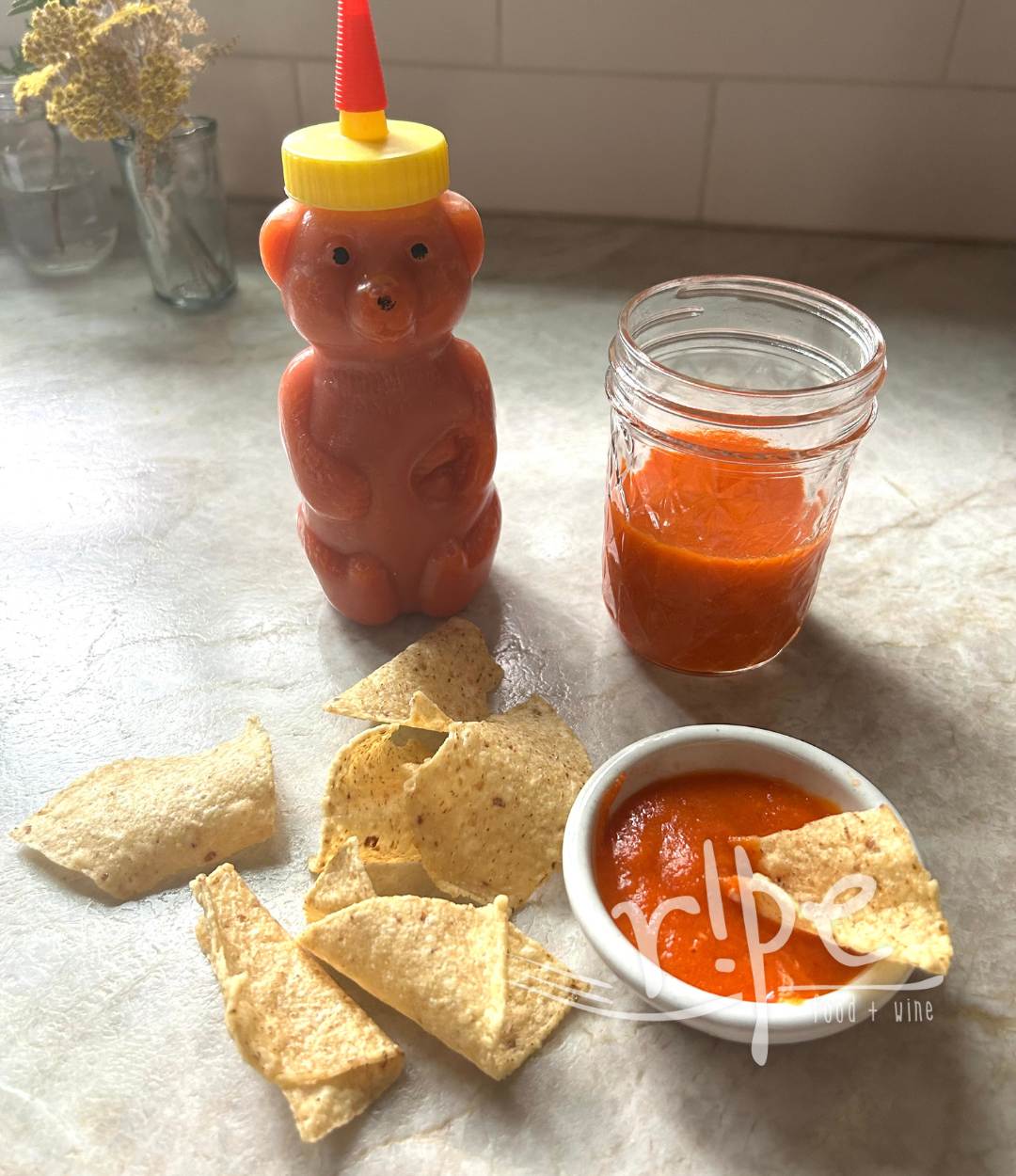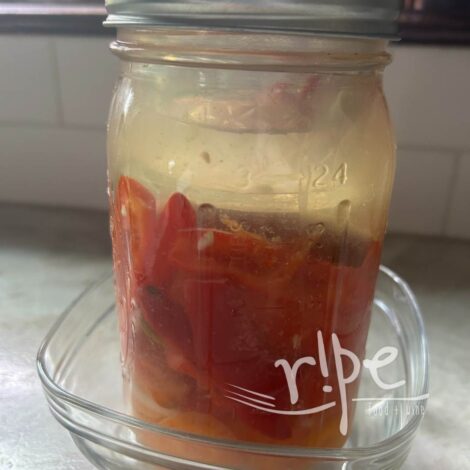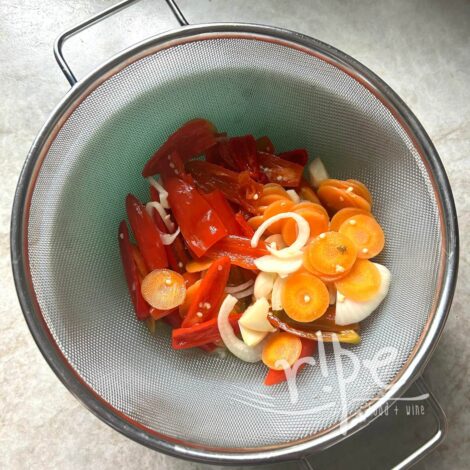It’s autumn here in Montana, the time of year we put gardens to bed and find ways to use the last of the tomatoes and chile peppers. Thanks to my friend Jeanne Allgood Gaisford for getting me intrigued about fermenting and for Sylvia Fontaine of Feasting at Home for the step-by-step guidance for this wonderful lacto-fermented hot sauce. If you have experience with lacto-fermentation, you can use my recipe below, but if you want more background and coaching, refer to Sylvia’s post. I cut the amount in half because I only had 8 ounces of chiles. That amount fits into a regular quart-sized canning jar which was a bonus.
Lacto-Fermented Hot Sauce
makes 12 ounces of hot sauce (Keep lightly covered and refrigerated); adapted from Sylvia Fontaine of Feasting at Home
Ingredients
Brine (This makes a "3% brine" which is 3 grams salt to 100 grams water)
- 2½ cups water I used filtered tap and it worked fine
- 3¼ teaspoons Kosher salt or fine sea salt
Vegetables
- 8 ounces chile peppers home grown or farmers market are best
- ½ carrot, unpeeled and thinly sliced
- 1 shallot, peeled and sliced
- 2 cloves garlic, peeled and quartered
Hot Sauce
- fermented chiles, carrot, shallot, and garlic
- ½ cup reserved brine
- 1 tablespoon apple cider vinegar Bragg's
- 1 tablespoon honey (optional)
Instructions
-
Heat the water and add the salt. Allow to cool while you prepare the chiles.
-
Wearing gloves, remove the stem, slice in half, and optionally remove the seeds and ribs. Add to a wide-mouth quart canning jar with the carrot, shallot, and garlic. Pour brine over the vegetables.
-
Rig up something to keep the vegetables submerged in the brine.
I have lots of jars around and was happy to discover that a 4-ounce mini jam jar fits in the mouth of a quart (wide-mouth). I filled the mini about halfway with water to make it a heavier which worked great.
Alternatively, use a sandwich baggie filled with water. If you have fermentation weights, now is the time to use one.
-
Set the quart jar in a bowl to catch any overflow. Lightly cover with the canning lid (do not screw on the ring) or piece of cheesecloth held in place with a rubber band. Allow to sit undisturbed at room temperature for 5 to 7 days, preferably somewhere dark like a corner of the pantry.
This is an active fermentation so you do not want to close the lid. Signs of fermentation—brine turns cloudy white and occasional bubbles rise to the surface. A longer fermentation time will mellow the heat of the chiles.
The Hot Sauce
-
Be careful not to touch the brine and touch your eyes or face, it's hot and spicy! This is another good time to use gloves.
Drain the fermented vegetables, preserving the brine.
-
Using a blender, purée the vegetables, ½ cup brine, apple cider vinegar, and honey. Transfer to a squeeze bottle with a loose cap and keep refrigerated.
The hot sauce is alive and fermenting so you do not want to tightly cover the sauce. I used a honey bear and put the cap on ever so lightly and set that in a plastic bag with the sidecar of extra hot sauce, no lid, because Sylvia kinda scared me and I don't want a mess in my refrigerator.





